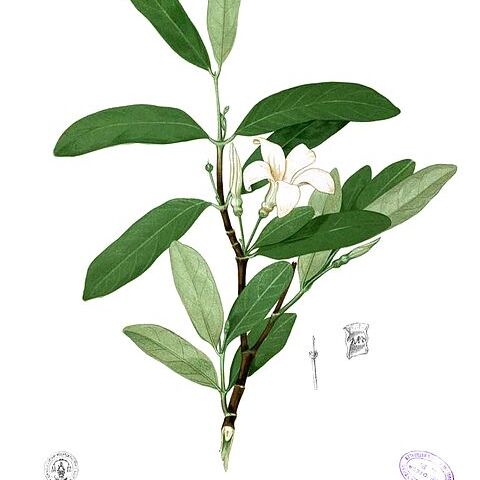Trees or shrubs, with latex. Leaves opposite. Cymes axillary, almost umbel-like; peduncle short. Pedicel long. Calyx with many basal glands inside. Corolla ± funnelform or salverform; tube terete, constricted below throat, throat without scales; lobes overlapping to right. Filaments short, broad; anthers exserted [or included], sagittate, connivent, adherent to pistil head, lobes spurred at base; disc ringlike or cup-shaped, fleshy, margin 5-lobed, membranous. Ovaries 2, free; ovules numerous in each locule. Style linear. Follicles 2, reflexed, long, thick, hard, leathery. Seeds narrowly oblong, apex naked, base with a very fragile, long beak bearing reflexed coma.

